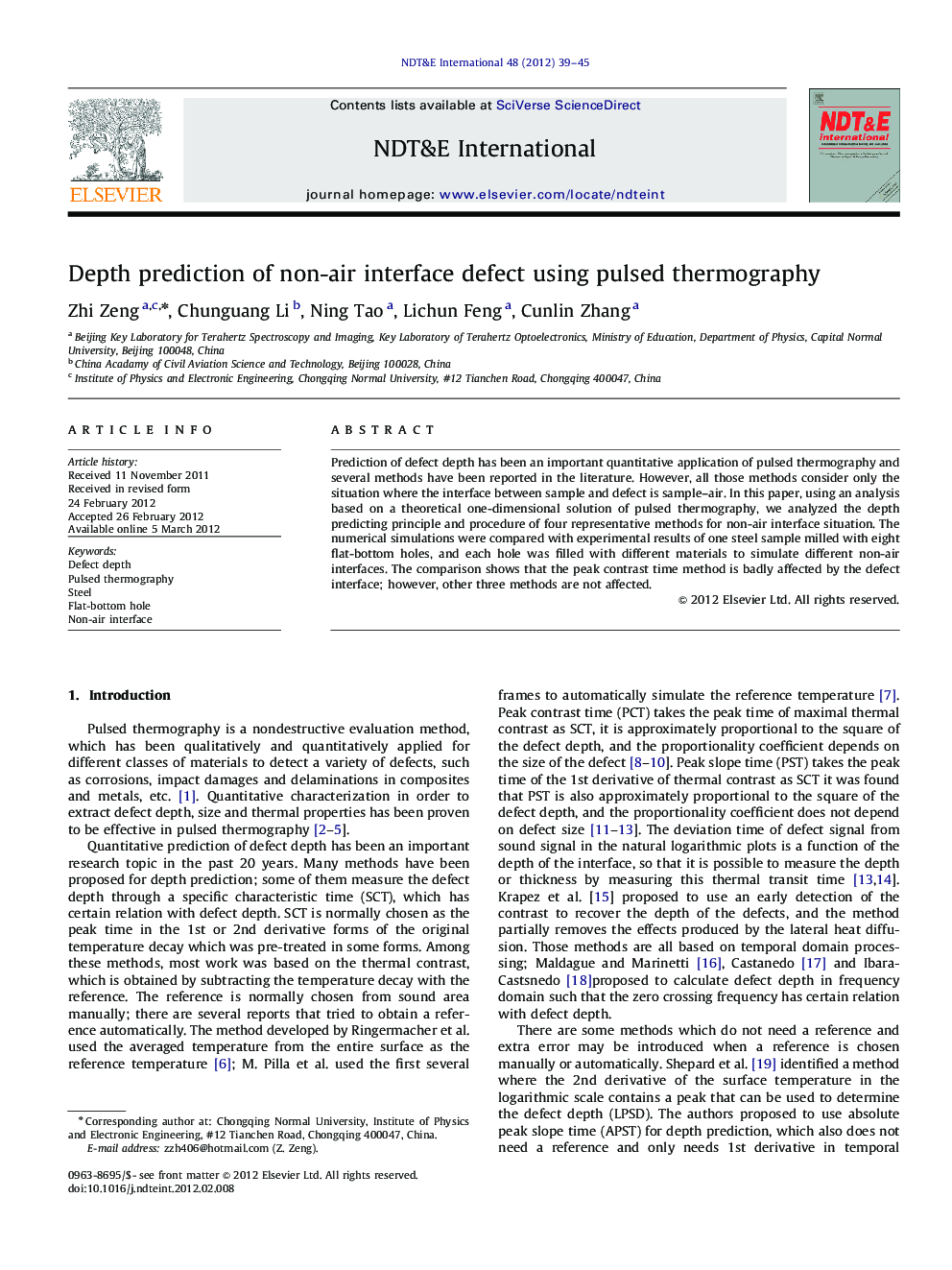| Article ID | Journal | Published Year | Pages | File Type |
|---|---|---|---|---|
| 295278 | NDT & E International | 2012 | 7 Pages |
Prediction of defect depth has been an important quantitative application of pulsed thermography and several methods have been reported in the literature. However, all those methods consider only the situation where the interface between sample and defect is sample–air. In this paper, using an analysis based on a theoretical one-dimensional solution of pulsed thermography, we analyzed the depth predicting principle and procedure of four representative methods for non-air interface situation. The numerical simulations were compared with experimental results of one steel sample milled with eight flat-bottom holes, and each hole was filled with different materials to simulate different non-air interfaces. The comparison shows that the peak contrast time method is badly affected by the defect interface; however, other three methods are not affected.
